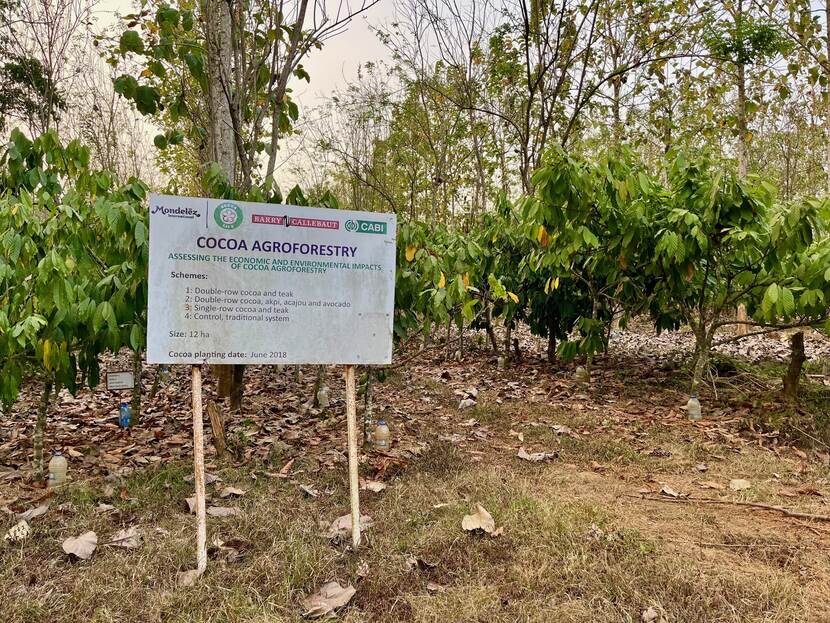Can Côte d’Ivoire and Ghana deliver the tons of cocoa promised?
The global demand for cocoa, the essential raw material for chocolate production, has been steadily increasing over the past several years. This trend is expected to continue in the coming years, driven by population growth and evolving consumption patterns, particularly in emerging markets. Côte d’Ivoire and Ghana are still the top producers of beans worldwide, yet the question is whether they can keep up with the demand.

Grinding is the adequate indicator for the demand. According to ICCO the grinding data published by regional associations for Q1.2024 depict that demand does not seem to neutralize the deficit. Whereas Europe’s Q1.2024 cocoa grindings as reported by the European Cocoa Association (ECA) fell by 2.2% from a year earlier to 367,287 tons, that of North America published by the National Confectioners Association (NCA) rose by 3.6% year-on-year to 113,683 tons.
Cote d'Ivoire and Ghana see a drastic decline in prodcution this year.
Côte d’Ivoire and Ghana are the two largest cocoa producers in the world, accounting for nearly 60% of global production. These two West African countries, therefore, play a crucial role in meeting the growing global demand.
At the same time, both countries are facing a significant decline in this season’s harvest and have already revised downwards their harvest forecast for this year. Legitimate concerns are being raised in Côte d’Ivoire by the major cocoa exporters regroups within GEPEX (the association of international exporters), the world's leading cocoa supplier) regarding the 2023/2024 cocoa harvest season. Recent estimates from exporters indicate that, since the start of the season last October until March 10, approximately 1.2 million tons of beans have arrived in the ports of Abidjan and San Pedro. This figure represents a substantial drop of 500,000 tons compared to the previous year within same period, signaling a looming crisis in the sector.
Ghana, the world's second-largest cocoa producer, is experiencing a comparable situation. According to Ghana Cocoa Board (the state owned regulatory body), the country anticipates harvesting between 650,000 and 700,000 tons this year. As of March, 2024 Ghana only gathered a little above 350,000 tons of this year’s harvest. The revised downward forecast for Ghana means a supply deficit of between 150,000 and 200,000 from the initial annual yield projection of 850,000 tons at the start of the 2023/2024 campaign. Also, the expected harvest is about, 300,000 to 350,000 tons short of the one million (1,000,000) tons harvested in 2020 and 2021 seasons - a 30 to 35 percent decline in just two seasons.

A combination of factors.
In the two West African nations, the causes behind this decline in production are varied and intricate. Climate-related challenges, such as unpredictable weather patterns, have been critical factors in reducing supply. Additionally, the prevalence of the Cocoa Swollen Shoot Virus (CSSV), a viral disease affecting cocoa trees, along with aging plantations, and the issue of illegal mining, in particularly for Ghana (locally referred to as galamsey), has further compounded this crisis. Alarmingly, the threat of illegal mining is starting to spread to certain regions of Côte d’Ivoire, potentially worsening an already dire situation.
Earlier this month, Ghana’s cocoa sector regulator disclosed that the CSSV, which significantly reduces yields and destroys cocoa trees, had ravaged over 500,000 hectares of cocoa farms. Only 67,385.43 hectares are currently undergoing rehabilitation under the African Development Bank's $230 million loan-backed program. Furthermore, during the 2022/23 season, an estimated 150,000 tons of cocoa were lost due to illegal gold mining and smuggling to neighboring countries, where farmers get a higher price for their cocoa. The convergence of these factors has resulted in an unprecedented shortage, posing a threat to the global chocolate supply and leaving the cocoa industry entangled in a web of uncertainty. The price is unlikely to drop soon due to new European legislation against deforestation and forest degradation (EUDR).
Challenges to boost production
However, cacao production in these two countries faces several challenges. Besides again trees and vagaries of the climate , the sector faces scarcity of agricultural labor and volatility of prices on international markets.
Controlling supply i.e. cocoa production is one of the priorities of the Côte d’Ivoire Ghana Cocoa Initiative (CIGCI). Consultations are underway between these two countries and the cocoa and chocolate industry to control supply and guarantee a decent price for the cocoa farm
Investements needed to increase production.
To meet these challenges and increase their cocoa production, major investments are needed. This includes developing and promoting improved cocoa planting material resistant to the main diseases (cocoa swollen shoot disease and black pod) and drought, training farmers on using early detection tools for cocoa swollen shoot disease and good agricultural practices, developing small irrigation systems to fight against climate change and using forest shade trees in line with EUDR.
Government programs are underway in this direction, but additional efforts will be necessary to achieve the production targets.
Author: Jean-Yves Couloud (jeanyves.couloud@minbuza.nl/ Gina Ackah (gina.ackah@minbuza.nl)